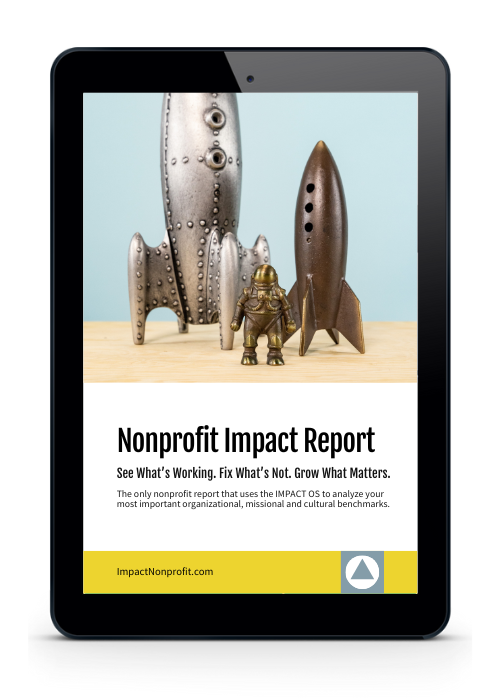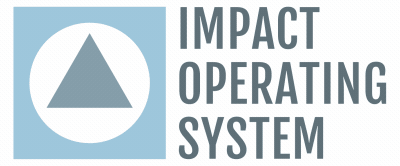When Anna handed in her resignation, no one was surprised—but everyone was heartbroken.
She’d been the operations director at a mid-sized nonprofit for four years. She held the place together with spreadsheets, pep talks, duct tape, and dreams. She was the kind of leader who didn’t just keep the trains running—she was out laying new track when no one asked her to.
Her departure wasn’t dramatic. She cried a little in her exit interview. She said how much she loved the mission, how grateful she was for the relationships, how much she’d grown.
But then she said this:
“I just can’t keep doing this to my family. I’m working 60 hours a week, my kids barely see me, and we’re still living paycheck to paycheck. I love the work. But it doesn’t love me back.”
Everyone nodded, solemn and quiet.
Then went back to their desks.
The Nonprofit Compensation Formula
This is the moment nonprofit leaders dread—not just because they’re losing a team member, but because they feel powerless to stop it. Budgets are tight. The mission is urgent. And burnout feels baked into the job description.
But underneath Anna’s resignation is a deeper tension—one every nonprofit faces, even if no one says it out loud:
How do we attract and retain incredible people when we can’t always pay what they’re worth?
That’s the heart of the nonprofit compensation formula. And no, it’s not just about salary. It’s about how people experience value in their work—financially, emotionally, and missionally.
If you’ve never named it before, here’s the full equation for nonprofits:
Compensation = Salary + Meaning
Now read that again. Because here’s the insight most organizations miss:
When one of those factors is low (usually salary), the others must be higher to compensate—or you will lose people.
The Passion Pay Gap Is Real
Most nonprofit professionals are walking a tightrope: deeply committed to meaningful work, and constantly calculating whether their personal sacrifice is sustainable.
Yes, many choose to accept a 30–50% pay cut compared to the private sector. But that doesn’t mean they’re okay with low compensation. It means they believe in the cause. They’re trading income for impact.
But belief doesn’t pay the rent. And passion doesn’t cover student loans or childcare.
This is where the formula breaks down—when an organization leans too hard on mission alone, without nurturing the other compensation components.
When salary is low and culture is toxic? When growth is stagnant and flexibility is rigid? That’s when even your most loyal people—people like Anna—start to slip away.
What High-Impact Nonprofits Do Differently
We’ve worked with over 1,300 nonprofit teams, and here’s what we’ve learned: The best ones get real about compensation—not just as a budget line item, but as a holistic strategy for staff health and retention.
Here’s what they do:
-
They name the gap.
Instead of pretending everything’s fine, they acknowledge the sacrifice. They say things like, “We know you could earn more elsewhere, and we’re grateful. Here’s how we’re working to make this a place that honors that sacrifice.” -
They maximize the other levers.
Can’t raise salaries this year? Cool. Can you offer:-
2 remote work days a week?
-
Flexible summer hours?
-
Paid personal development or leadership training?
-
Clearer career pathways?
Remember: Salary is fixed. Culture and flexibility are adjustable—and powerful.
-
-
They budget for raises like they budget for impact.
Too many nonprofits treat staff raises as a nice-to-have. But if your people are your mission-delivery system (spoiler: they are), then funding raises is mission-critical. -
They talk about the “why” often.
When staff understand how their role connects to the larger mission—and how the organization is investing in them—loyalty goes up, even when pay can’t. Remember, half of the equation is around meaning!
The Cost of Ignoring the Formula
Let’s go back to Anna.
Her exit cost the organization more than sadness. It cost:
-
$8,000 in recruiting and onboarding
-
6 months of reduced productivity
-
A staff morale dip that took a year to recover from
All because the organization treated compensation like a liability instead of a strategy.
They didn’t lose Anna because they didn’t care. They lost her because they didn’t calculate the full cost of keeping her.
So What Do You Do With This?
First, don’t panic. You don’t need to overhaul everything tomorrow.
But you do need to get honest about how your compensation formula is actually playing out—on the ground, in the hearts and homes of your team.
That’s where the Impact OS Health Assessment comes in. It’s a free, practical tool that helps you evaluate not just your salary structure, but your culture, people systems, and overall organizational health.
Because your team’s well-being isn’t separate from your impact.
It is your impact.

👉 Get your free Nonprofit Impact Report
It’s a quick, practical tool that gives you a snapshot of where your organization is thriving and where it’s stuck. After taking our proprietary 5-minute survey, you’ll walk away with a custom report—and more importantly, a few next steps you can actually take.
No jargon. Just clarity. Because your nonprofit doesn’t need another inspirational quote. It needs a system that helps you turn vision into victory.
👉 [Get your report by taking the 5-minute survey now]

